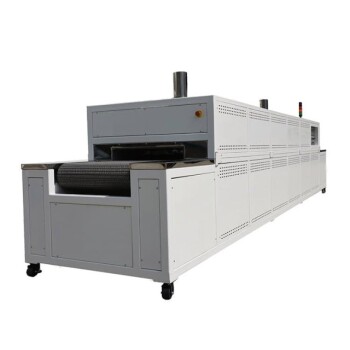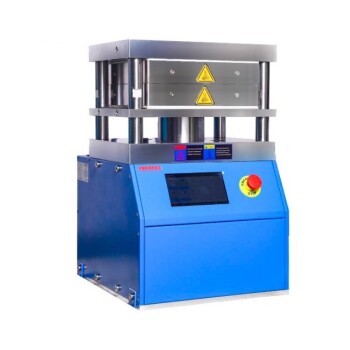样本尺寸和形状
测量样品尺寸
准确测量样品尺寸是选择合适箱式马弗炉尺寸的关键步骤。首先要确定您日常处理的样品的最大尺寸,重点是长、宽和高等关键参数。这些信息对于确保炉腔能顺利容纳样品至关重要。
对于形状不规则的样品,重要的是要考虑它们占据的总空间,而不仅仅是它们的线性尺寸。这可能需要测量样品的最大长度、宽度和高度,以及任何可能影响样品在炉腔内适应性的突出部分或不规则部分。
为了让大家更清楚地理解,请考虑以下情况:
- 形状规则的样品: 对于长方形或圆柱形样品,只需测量长、宽和高即可。对于圆柱形样品,还需要测量直径。
- 不规则形状的样品: 对于几何形状复杂的样品,要测量所有三个轴的最大尺寸。此外,还要考虑样品可能占据更多空间的任何区域,如突出部分或不规则表面。
| 样品类型 | 测量尺寸 | 其他考虑因素 |
|---|---|---|
| 矩形 | 长、宽、高 | 无 |
| 圆柱形 | 长度、直径 | 无 |
| 不规则 | 最大长度、宽度、高度 | 考虑不规则所占空间 |
通过系统地测量这些尺寸,可以确保所选炉腔能舒适地容纳样品,无论样品的形状是规则的还是不规则的。这种方法有助于避免加工过程中可能出现的问题,并确保最佳利用炉子的容量。
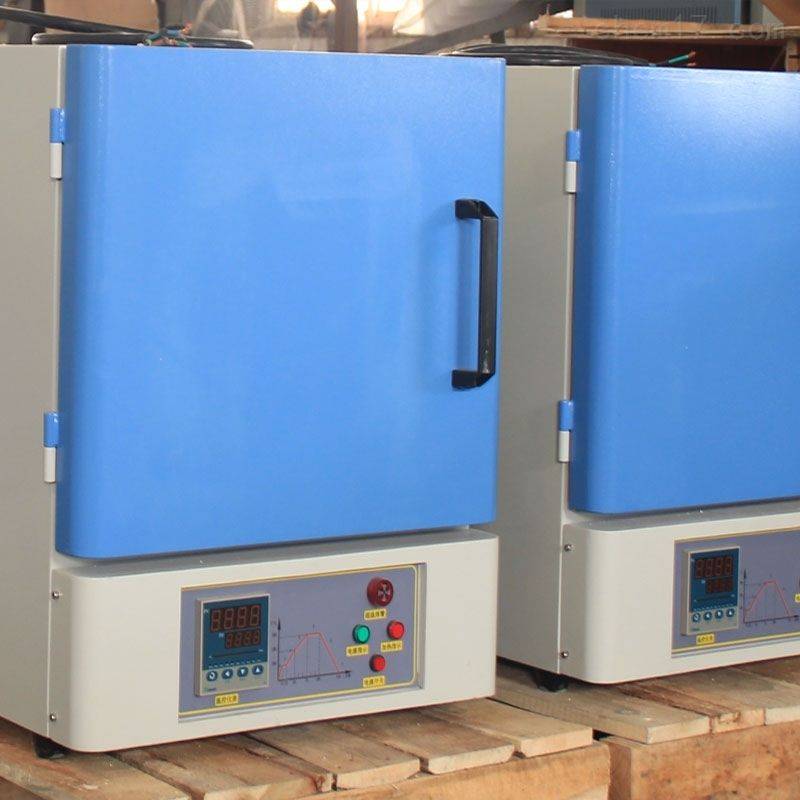
适应样品形状
在选择马弗炉时,考虑您日常处理的样品形状至关重要。例如,如果您的工作流程经常涉及较大的圆柱形样品,那么炉腔的尺寸必须足以容纳这些样品。具体来说,炉腔的高度和直径应足够大,以防止对样品的放置或处理造成任何干扰。
为确保适当的容纳性,请考虑以下因素:
- 样品尺寸:测量您通常处理的最大圆柱形样品的高度和直径。这样可以确保样品室能够容纳这些样品,而不会影响流程的完整性。
- 体积和空间:评估样品所需的总体积,包括在样品室内移动或定位所需的额外空间。
| 样品尺寸 | 所需样品室尺寸 |
|---|---|
| 高度 | 最小样品室高度 |
| 直径 | 最小炉膛直径 |
通过仔细评估这些尺寸,您可以选择一款不仅能满足当前需求,还能支持未来要求的马弗炉,而无需立即更换设备。
样品数量
同时处理
在选择箱式马弗炉时,估算每次实验或生产运行中同时处理的样品数量至关重要。这种估算不仅仅是将样品装入炉膛,还包括确保每个样品都有足够的空间在不影响结果的情况下得到有效处理。
例如,如果您的实验通常需要处理多个小样品,您需要确保样品室能够容纳所有这些样品,而不会过度拥挤。过度拥挤会导致样品加热或冷却不充分等问题,从而影响结果的准确性。
| 样品类型 | 典型数量 | 样品室要求 |
|---|---|---|
| 小样品 | 20-30 | 足够的间距和操作空间 |
| 中型样品 | 10-15 | 足够的空间,以便均匀加热和冷却 |
| 大型样品 | 5-10 | 考虑每个样品的放置位置和可达性 |
此外,样品的形状和尺寸也是决定最佳样品室尺寸的重要因素。例如,如果您经常处理圆柱形样品,样品室必须有足够的高度和直径来容纳它们。同样,形状不规则的样品可能需要更大的空间,以确保它们不会相互接触,从而导致加工不均匀。
通过仔细估算要同时处理的样品数量和类型,您可以选择一个既能满足当前需求,又能在未来实验或生产运行中灵活使用的样品室尺寸。
容纳多个样品的空间
当计划同时处理大量样品时,例如同时处理 20 个小样品,确保马弗炉炉腔有足够的空间至关重要。样品之间要有足够的间距,以防止干扰并确保加热均匀。
举例说明,请考虑以下因素:
-
样品排列:样品在箱内的布局应仔细规划。确保每个样品周围都有足够的空间,以便进行适当的热循环。可以将其想象成一个网格,每个样品占据一个特定的单元,而相邻的单元则留空。
-
样品室容积:样品室的内部容积必须足够大,以容纳一定数量的样品而不会过于拥挤。过度拥挤会导致加热不均匀,并可能损坏样品和炉子。
-
热量分布:适当的间距有助于保持整个炉室温度分布均匀。这对于需要精确热条件的过程尤为重要。
通过考虑这些方面,您可以优化马弗炉炉腔的使用,以进行多种样品处理,确保实验的效率和可靠性。
实验或生产过程
辅助工具和仪器
在为马弗炉选择合适的炉腔尺寸时,评估辅助工具和设备所需的空间至关重要。这些物品可能包括坩埚、托盘、支架和其他专用设备,在各种实验和生产过程中发挥着重要作用。
主要考虑因素:
- 坩埚和托盘:确保炉室内有足够的空间容纳多个坩埚或托盘,尤其是在工艺涉及同时加热多个样品的情况下。
- 支架和夹具:如果您的工艺需要使用支架或夹具来定位样品,请考虑这些物品在样品室中所占的额外空间。
- 专用工具:对于化学分析等特殊应用,可能需要在样品室内放置搅拌棒或热电偶等额外工具。必须考虑到这些工具所需的空间。
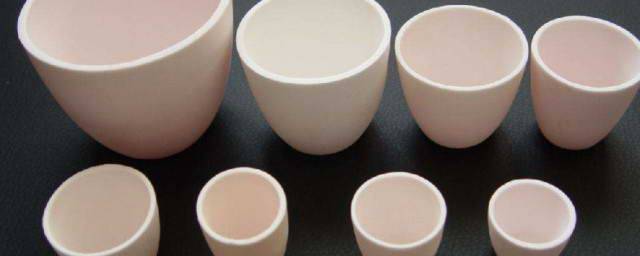
实际应用场景:
- 化学分析:在涉及化学分析的实验中,可能需要在炉膛中同时放置多个坩埚和搅拌工具。必须分配足够的空间,以确保这些工具不会相互干扰或影响样品。
- 材料处理:对于材料处理任务,使用托盘或支架放置样品会对所需的炉腔尺寸产生很大影响。确保这些物品能舒适地放置在试验室内而不会过于拥挤,对于高效安全地运行至关重要。
通过仔细考虑这些辅助工具和设备所需的空间,您可以选择符合特定操作要求的马弗炉炉腔尺寸,确保顺利有效地进行处理。
工具的放置
在进行某些化学分析实验时,炉膛内工具的有效放置至关重要。具体来说,必须仔细考虑坩埚和搅拌工具的布置,以确保获得最佳实验结果。
例如,炉腔必须同时容纳多个坩埚,每个坩埚都可能含有不同的化合物。这就需要进行战略性定位,以防止交叉污染并促进均匀加热。此外,搅拌工具对保持化学反应的均匀性至关重要,其放置方式既要便于操作,又不能妨碍坩埚。
举例说明,假设实验中使用了三个坩埚,每个坩埚都装有不同的反应物。炉腔应足够大,以便将这些坩埚摆成三角形,确保它们与中心的距离相等,以获得均等的热量分布。搅拌工具通常是棒或桨,应放置在坩埚附近,但不能直接接触坩埚,以便在搅拌过程中能畅通无阻地移动。
这种精心的摆放不仅能提高实验效率,还能最大限度地降低出错风险,从而提高实验结果的整体准确性和可靠性。
未来发展需求
预测未来需求
在计划未来的实验或生产流程时,考虑样品大小和数量的潜在增长至关重要。预测这些变化可以避免过早更换马弗炉所带来的不便和花费。
例如,如果您预见到样品的尺寸会增加,那么现在选择炉腔更大的马弗炉就可以容纳更大的样品,而无需升级。同样,如果您的研究或生产量预计会扩大,那么能够同时处理更多样品的窑炉将是一项明智的投资。
举例说明,请考虑以下几种情况:
-
方案 1:样品尺寸增加
- 当前样品尺寸:10 厘米 x 10 厘米 x 10 厘米
- 未来样本尺寸:15 厘米 x 15 厘米 x 15 厘米
- 建议行动:选择炉腔尺寸能够适应未来样品尺寸的窑炉。
-
方案 2:样品数量增加
- 当前样品量 :20 个小样品
- 未来样品量:30 个小样本
- 建议行动:选择炉腔可同时处理更多样品而不会过于拥挤的炉子。
通过做出这些预见性的决定,可以确保马弗炉始终是满足不断变化的需求的有效工具。
选择面向未来的尺寸
在选择马弗炉炉膛尺寸时,不仅要考虑当前的需求,还要考虑未来的潜在要求。选择稍大一些的炉膛有几个好处。首先,它可以处理更大尺寸的样品或增加样品数量,以适应实验或生产需求的潜在增长。这种前瞻性可使您避免在短期内更换设备所带来的不便和费用。
此外,更大的样品室还能灵活适应未来的技术进步或实验方法的变化。例如,如果您预计将来需要使用更多的工具或仪器,如更大的坩埚或专门的支架,那么更大的炉膛就已经具备了必要的空间。这种适应性可确保您的窑炉始终是您不断发展的研究或生产工艺的可行工具。
总之,选择炉膛尺寸超出当前要求的马弗炉可以提供长期的解决方案,减少频繁升级设备的需要,并确保您的投资随着需求的扩大而保持相关性。
工作环境和空间限制
炉子位置
在最终确定马弗炉的位置之前,必须仔细测量指定工作区域的尺寸。这样可以确保所选炉子及其相应的炉膛尺寸可以容纳,而不会对可用空间造成过大的压力。
为确保安全高效地运行,必须在窑炉周围留出足够的操作空间。这包括保持足够的安全距离,以防止任何潜在的危险。例如,在实验室环境中,窑炉不应靠近易燃材料或其他敏感设备。
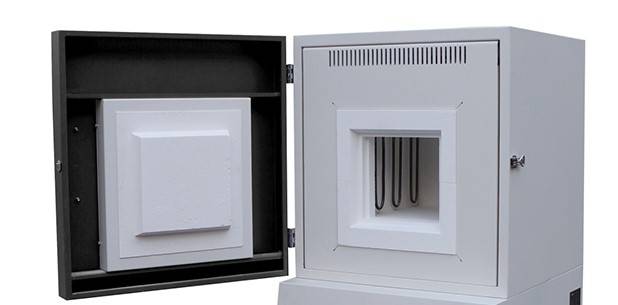
此外,还要考虑工作区内的工作流程。窑炉的位置应便于装卸样品以及日常维护和检查。这种战略性摆放方式不仅能提高操作效率,还有助于营造更安全的工作环境。
| 考虑因素 | 重要性 |
|---|---|
| 空间测量 | 确保窑炉安装在指定区域内。 |
| 安全距离 | 防止危险并确保安全操作。 |
| 工作流程效率 | 便于检修和维护,提高整体生产率。 |
通过仔细规划炉子的摆放位置,可以确保马弗炉在工作环境的限制条件下以最佳状态运行。
空间考虑
在空间有限的实验室中,炉膛尺寸的选择是一项至关重要的决定。选择过大的炉膛会带来一些操作难题。首先,它会侵占有限的工作空间,使其他基本设备的布置和操作变得困难。这会导致环境杂乱无章,不仅影响效率,还会带来安全风险。
此外,过大的炉膛会使炉子的安装和维护变得复杂。它可能需要额外的支撑结构或专门的固定装置来确保稳定性,从而增加了安装的复杂性和成本。此外,炉膛越大,能耗就越高,这在注重能源的环境中可能是一个重大问题。
为了避免这些缺陷,建议在选择炉室尺寸时,既要满足必要的样品尺寸,又要考虑实验室的空间限制。这种方法不仅能确保窑炉在可用空间内使用,还能确保窑炉在不影响其他设备功能的情况下高效运行。
温度均匀性要求
炉膛尺寸的权衡
在选择马弗炉炉膛尺寸时,必须仔细考虑炉膛尺寸与温度均匀性之间的权衡。虽然较大的炉腔可以提供更大的灵活性,以适应不同的样品尺寸和形状,但也会在保持整个炉腔温度分布均匀方面带来挑战。这对于要求高精度和高一致性温度控制的实验或生产过程尤为重要。
例如,在高精度材料研究实验中,由于需要均匀的温度分布,通常需要较小的样品室。这是因为较大的腔室会导致温度梯度,腔室的不同区域可能会达到不同的温度。这种不一致性会严重影响实验结果,尤其是在敏感应用中,即使是微小的温度变化也会改变实验结果。
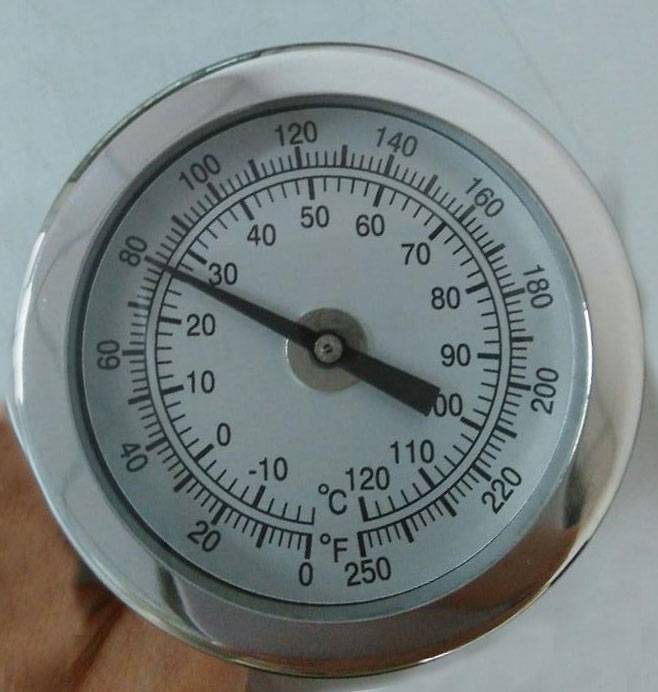
| 箱体尺寸 | 温度均匀性 | 影响 |
|---|---|---|
| 小 | 高 | 确保温度分布均匀,适合精密实验。 |
| 大 | 低 | 可能导致温度梯度,不太适合高精度应用。 |
因此,应根据实验或生产工艺的具体要求来选择较大或较小的样品室。虽然较大的恒温室可能因其多功能性而吸引人,但如果温度均匀性是一个关键因素,它可能并不总是最佳选择。相反,较小的样品室虽然在样品尺寸方面限制较多,但可以为高精度工作提供必要的温度一致性。
总之,在决定样品室的大小时,应在适应各种样品尺寸和形状的需要与保持温度分布均匀的要求之间取得平衡。在根据具体需求选择合适的马弗炉时,这种权衡是至关重要的考虑因素。
精密实验
在高精度材料研究实验中,实现温度均匀性至关重要。这就需要仔细考虑马弗炉的炉腔大小。在这种情况下,通常会选择相对较小的炉腔,以最大限度地减少温度梯度,确保样品加热的一致性。
例如,在进行涉及纳米材料合成或金属退火等需要精确温度控制的实验时,较小的炉腔可以提供更均匀的加热条件。这是因为较大的腔室可能会带来温度分布的变化,从而对实验结果产生不利影响。
| 实验类型 | 实验箱尺寸偏好 | 原因 |
|---|---|---|
| 纳米材料合成 | 小 | 确保加热均匀,便于精确控制 |
| 金属退火 | 小 | 最大限度地减少温度梯度,实现一致的结果 |
| 化学分析 | 中型至小型 | 在不影响温度均匀性的前提下为工具提供足够的空间 |
总之,对于精度要求较高的实验,选择炉膛尺寸较小的马弗炉对于保持温度均匀性和获得可靠的实验结果至关重要。
预算
成本影响
在选择箱式马弗炉时,炉膛尺寸在决定总体成本方面起着重要作用。一般来说,炉膛尺寸越大,价格越高。这种相关性是由多个因素造成的,包括与大型设备相关的材料和制造成本的增加,以及高效运行和热量分配所需的额外组件。

然而,成本影响并不局限于最初的购买价格。大型窑炉还可能产生更高的运行成本,如增加能耗和维护要求。例如,较大的炉子可能需要更频繁的校准和维护,以确保性能稳定,这可能会增加长期费用。
| 因素 | 对成本的影响 |
|---|---|
| 炉膛尺寸 | 与较高的初始成本和运行成本直接相关 |
| 材料成本 | 由于使用的材料较多,较大炉型的材料成本增加 |
| 制造复杂性 | 较大型设备的制造更为复杂,导致生产成本提高 |
| 能源消耗 | 大型设备能耗更高,导致运营成本增加 |
| 维护频率 | 大型设备维护更频繁,增加长期成本 |
因此,在做出选择时,平衡预算限制和功能要求至关重要。确保所选窑炉能满足必要的加工需求,而不会在不必要的功能上花费过多资金,从长远来看,这样的解决方案更具成本效益。









